Feed a snake the safe way with CO2
Introduction:
A little about myself and this tutorial...
I have owned many snakes as pets and currently have two boa constrictors. And, as all creatures, they need to eat as well. My problem - I don't want to risk my snakes getting injured by killing their prey. We're not talking mice here, either. My two eat things like ducks, chickens, guinea pigs, rabbits, piglets - whatever is a good sized meal.
So I can either throw the animal in there with them alive and watch it scream and die painfully or I can euthanize the animal first to save both animals any pain.
In this tutorial, I will explain how I made a carbon dioxide chamber to safely euthanize an animal before I feed it to my snakes.
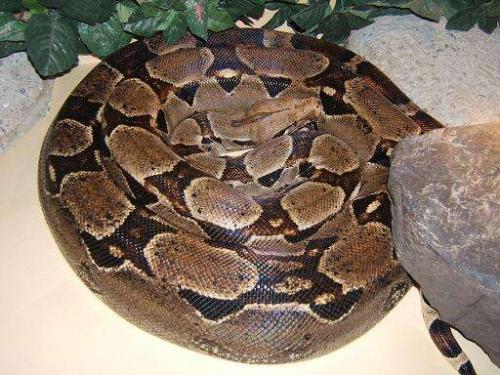
Step 1: You need some sort of chamber
A person making a project such as this will first need a chamber with a tight-fitting lid that is big enough to fit the type of animal that the hungry snake likes to eat.
Remember to consider how big the snake can grow and to choose a container that will accept the proper-sized food for it throughout its life.
I used a metal popcorn barrel. The barrel was painted, and I drilled two small holes into it - one near the top and one near the bottom.
Take care when drilling that the hole is the proper size to accept the tubing that will be used later.
As an optional step, I cut out a hole in the lid and used epoxy to fit a scrap piece of plexiglass so that I can see inside. I have found this very helpful when administering the CO2.
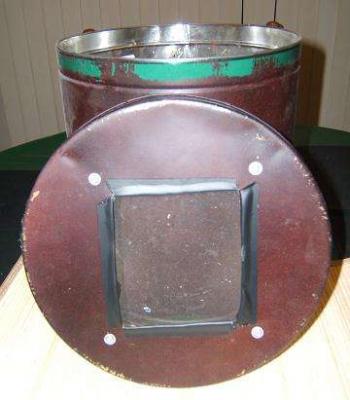
Step 2: Attatch the tubing
For this, I used small aquarium tubing. I fed about an inch of tubing through each hole and held them in place with epoxy. Use enough epoxy to create an air-tight seal.
The bottom inlet is for the CO2 and the top is an outlet to allow air to escape.
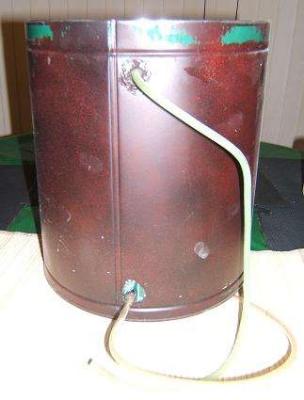
Step 3: The CO2 Tank
I used a regular 20oz. CO2 tank made for paintball guns. To it, I attached a valve that controls the amount of gas released and to the valve, I connected a fitting that accepts a tube.
When I went to buy all the parts, I went to a local shop that specializes in paintball accessories and explained to the clerk what I needed and he set me up with the proper parts.
The tube connected to the CO2 tank connects to the bottom tube in the chamber.

Step 4: The air trap
When filling the chamber with gas, the air will escape through the top tube.
The last thing you want is for air to be able to get back in after administering the gas. To solve this, the top outlet tube goes into a cup or bowl of water. This allows the air to escape and bubble out, but it cannot come back in.
The reason why: When euthanizing the animal, oxygen leaking back in can prolong the death and also cause it to choke. In my opinion, if the animal is giving its life to feed my snakes, then it deserves to die quickly, painlessly and most of all - with dignity. I have the utmost respect the animal, same as I do for the ones that die to go on my dinner plate.

Step 5: Administering the gas
The gas is leaked in when the valve is turned on, slowly filling the chamber from bottom to top. The animal breathes in the gas and dies. If done properly, it will look as if the animal went to sleep and it won't choke or struggle.
Start with a small flow at the beginning. Too much too fast and the animal will panic and/or choke. Once the animal seems groggy and lays down, slowly increase the flow. At this point, the animal will appear to faint. Continue with the gas until the chamber is completely full with gas. Since CO2 is clear, you will have to judge when it is full. Wait two minutes or so and add more gas. At that point, the animal is dead, but sometimes it is hard to tell. Just let it sit for about five minutes or so. After that, shake the chamber and if the animal is not responsive, then it is dead.
Take care when removing the lid. Fan it slightly with the lid or something to prevent yourself from inhaling any gas. The animal will most likely have soiled itself and a layer of bedding will make for an easier cleanup.
When doing two or more animals at one time, such as a litter of mice, take care to not overcrowd the chamber as this will stress the animals and cause panic. Administer the gas as normal.
The most important part is not to stress the animals. When done properly, the animal dies very calmly and does not choke or panic.
At this point, the dead animal can either be fed to the snake or frozen for later.
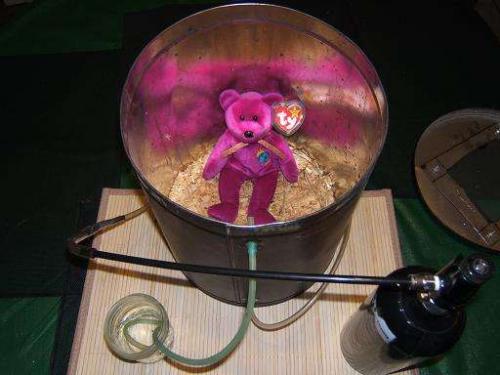
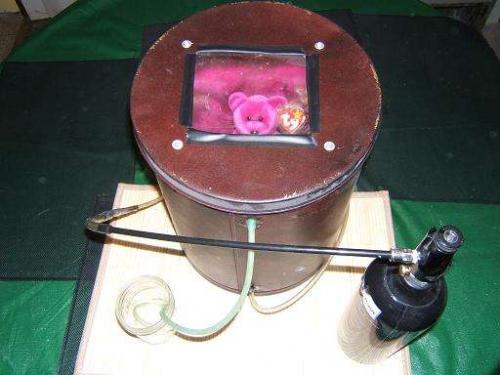
Summary:
You are a pet owner. You have a duty to keep your pet safe and healthy. Your pet can rely on nobody but you to provide it with what it needs to live.
A snake's temperament is caused by many factors such as the species and also how it is treated. Weaning a snake from eating live prey to accepting pre-killed prey can help it to become comfortable with handling and help to reduce the risk of the handler getting bitten. After all, it will no longer have to kill for sustenance. A snake is also less likely to strike when it is full. Handlers should also take care to wash off any scent of prey from their hands as a snake can easily mistake a scented hand for a meal. Check with the seller and with books to determine how often a snake will need to eat before you buy it.
Food can easily be frozen and stored for later use. It can be left to thaw on the counter and when completely thawed, warm the body with warm water. This can be done by putting the animal in a zip-lock bag and placing it in a container ot warm water for 10 or 15 minutes. Be sure that the animal is completely thawed as you do not want your snake to eat any ice. This can cause it to get sick, become too cold, or regurgitate the meal.
To convince a snake to begin taking dead prey, you can try rubbing the food on a live prey item to cover it with the scent of food. Forceps can be used to wiggle the food in front of the snake and cause it to strike. I use grill tongs for this as it keeps my hands a safe distance away from the snake when it is eating. After a while, the snake should become used to eating this way and it will become easier. I never have to scent the food anymore - the snakes are used to the food the way it is and they strike and wrap it as usual.
Last, but not least - as a responsible pet owner you are responsible for providing the snake with proper nutrition. The snake derives its nutrition from the food it eats, so the prey must also be healthy. Prior to gassing, feed the animal for a couple of days with quality food. Also, a good time to gas is after it has been observed eating. This ensures that there are extra vitamins and protein inside the animal's stomach that the snake will benefit from.
In closing, snakes don't eat tofu. An animal has to die for the other to live. But, with care and compassion, an owner can ensure a quick and painless death for the prey and prevent injury and vet bills when the live prey fights back. Most all types of snakes will accept pre-killed prey and it is easy and economical for the owner. Rats and mice come already frozen, but to a person with larger snakes (like me) or with a large collection who breeds their own food, this is an easy and economical way to euthanize prey
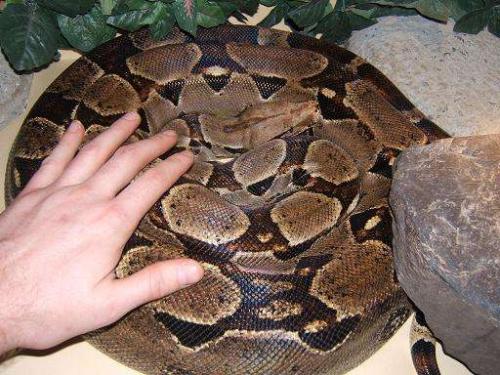
Additional Info:
To read more on the subject of humane euthanasia of feeder animals, you can read what the American Veterinary Medical Association has published:
http://www.avma.org/issues/animal_welfare/euthanasia.pdf




